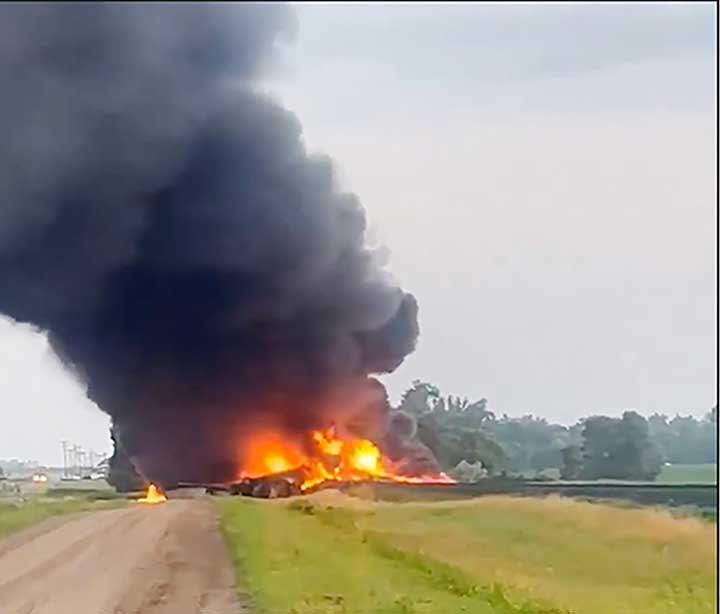The fiery North Dakota derailment that burned for days early last month was the latest train crash to involve the flawed tank cars that the National Transportation Safety Board (NTSB) has been trying to get off the tracks for decades.
The NTSB said in a preliminary report released Aug. 1 that the July 5 train crash near the small town of Bordulac, North Dakota, caused an estimated $3.6 million in damage to the CPKC railroad tracks and equipment. But the agency didn’t offer many hints about what caused the derailment that happened in the early morning hours that day.
CPKC railroad officials are prohibited from answering questions about the derailment while NTSB is investigating.
The NTSB highlighted the fact that some of the 17 tank cars carrying hazardous materials that derailed were DOT-111 tank cars that have demonstrated time and again that they are prone to rupturing in a train crash. The agency has been recommending eliminating the use of those cars for hazardous materials at least since the 1990s because of their history of problems, and Congress did mandate that they be replaced for hauling flammable liquids by 2029. But even then, they could continue to be used for other hazardous materials.
Officials at the Federal Railroad Administration have said it might be possible to move up that deadline by a year, but probably not much more than that because tank car manufacturers don’t have the capacity to do it sooner. There is also a significant cost to replacing tank cars for the chemical and leasing companies that own them.
The NTSB said it will be doing a detailed damage assessment on the DOT-111 tank cars and the more robust newer models of tank cars that were involved in this crash as part of its investigation over the next year or more. Recently, investigators highlighted the way those tank cars worsened the disastrous Norfolk Southern derailment in East Palestine, Ohio, last year when they ruptured and spilled butyl acrylate, fueling a massive fire that prompted officials to needlessly blow open five tank cars of vinyl chloride to prevent a feared explosion.
In the North Dakota crash, it was fortunate that few people lived nearby. Only two homes were voluntarily evacuated for two days while crews put out the fires and dealt with the methanol and anhydrous ammonia that spilled. A dozen of the other cars that derailed were carrying plastic pellets.
No injuries were reported in the derailment itself.
The NTSB said an emergency brake application was done on the train before it derailed, but it didn’t say whether the two-person crew did that or whether the brakes were triggered automatically.
The 151-car train was going about 45 mph when it derailed — which was below the 50 mph speed limit for it since it was carrying a number of hazardous materials cars.
By Josh Funk, The Associated Press
The Associated Press is an independent global news organization dedicated to factual reporting. Founded in 1846, AP today remains the most trusted source of fast, accurate, unbiased news in all formats and the essential provider of the technology and services vital to the news business. The Trucker Media Group is subscriber of The Associated Press has been granted the license to use this content on TheTrucker.com and The Trucker newspaper in accordance with its Content License Agreement with The Associated Press.






